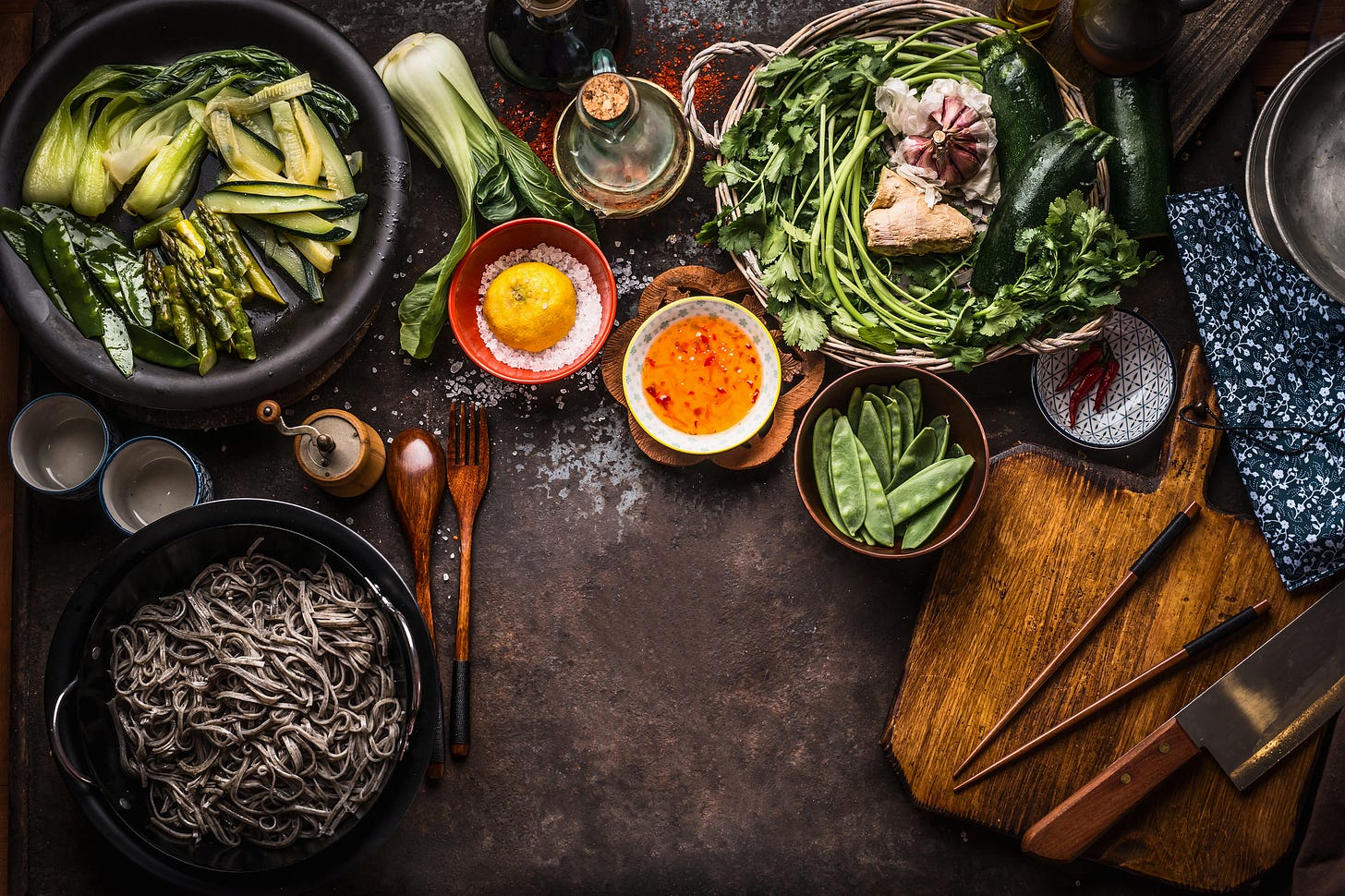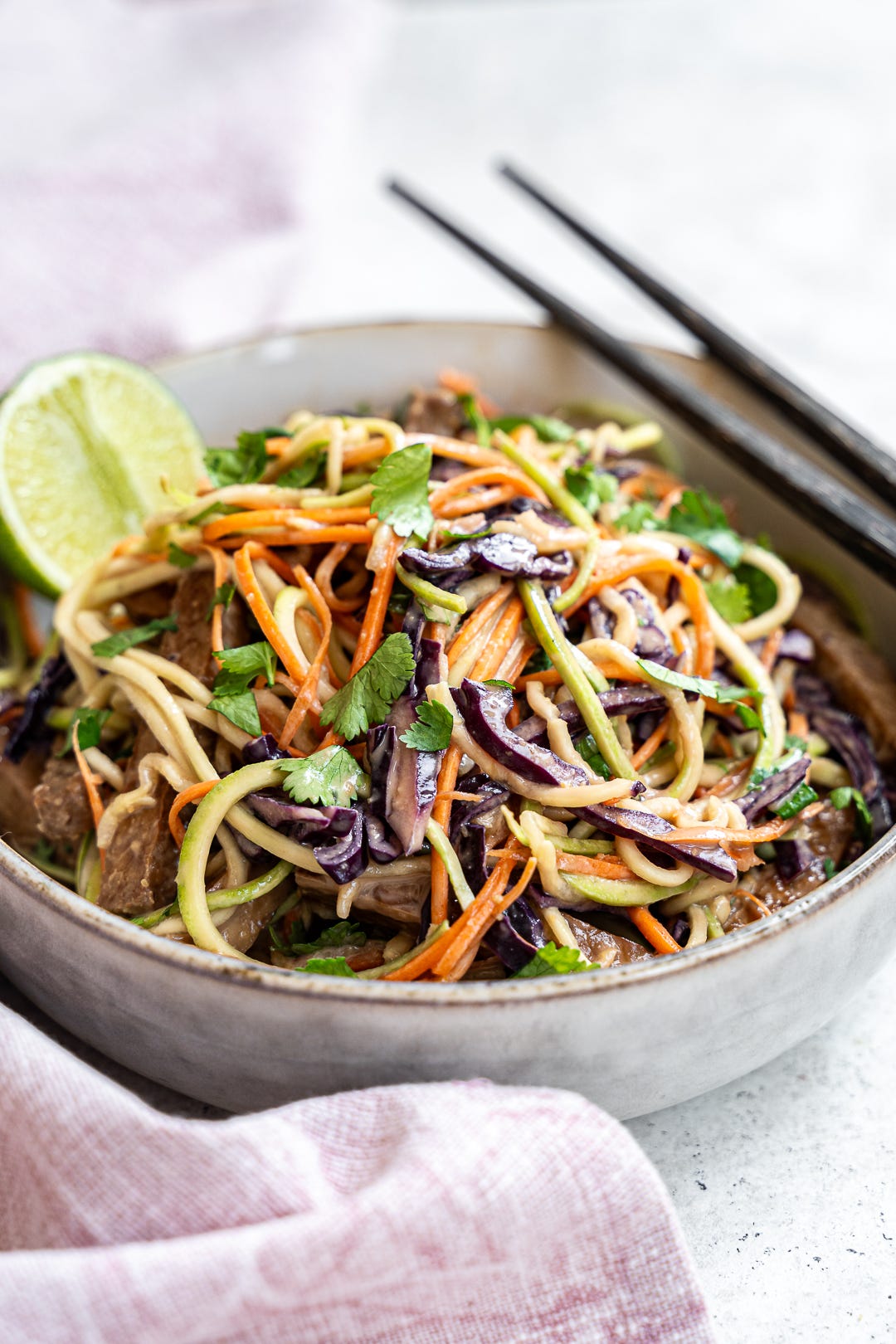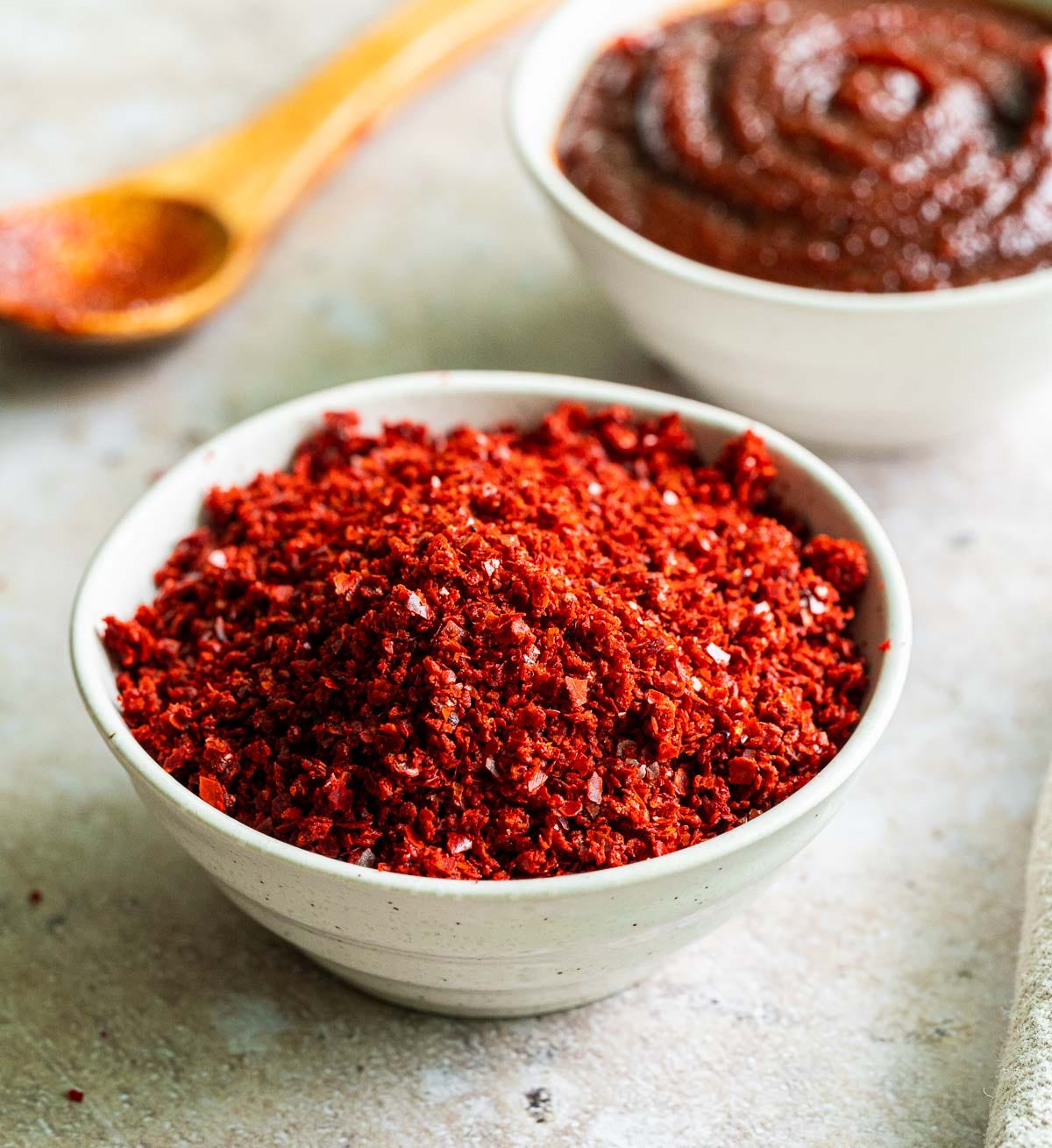Hi there! Happy Wednesday 💚
If you have just joined our newsletter, welcome! You’ve joined this lovely community at a fantastic time, as we’re diving into Asian cuisine this month, one of my very favorite cuisines!
On our blog, you can find A LOT of recipes from different Asian countries. I took different cooking classes while travelling around Asia, and it helped me gain confidence using Asian ingredients and creating unique flavors in my kitchen. So let’s dive into the fresh and pantry ingredients you’ll need to make all these delicious recipes.
When I say Asian cuisine, I refer mostly to South-East Asia. I want to keep India for another month, as I believe it deserves a whole chapter.
Six Hungry Feet is a reader-supported publication. To receive new posts and support my work, consider becoming a free or paid subscriber. I’ll be sending an exclusive recipe this week, Lemon Tofu 🍋, so make sure to upgrade your subscription before that to not miss it!
Fresh Ingredients in Asian Cuisine
As I’ve mentioned before, I’m a huge fan of Asian flavors. We cook Asian-inspired meals at home at least four to five times a week, ranging from stir-fries and noodle soups to rice dishes and curries. Our kids have grown up loving these flavors, which made things super easy when we moved to Malaysia for a few months—they absolutely loved it there!
To make cooking these dishes easier, we always keep a few key ingredients in our fridge. Here are some essentials:
Fresh herbs. Cilantro, mint, green onions, and lemongrass are must-haves for many Asian dishes. We keep lemongrass in the freezer so it lasts longer. If you can find Thai basil, definitely go for it! I’ve been searching for it in Spain but haven’t had any luck yet.
Ginger & Garlic. The backbone of so many Asian recipes, from Chinese stir-fries to Thai curries. Fresh ginger brings warmth and a little spice, while garlic adds that deep umami flavor. If fresh ginger isn’t always available, ginger powder works as a backup.
Tofu. A kitchen staple for us! Whether firm for stir-frying or silken for soups and sauces, tofu is amazing at soaking up flavors.
Tempeh. This protein is my second choice when it comes to Asian cuisine. I love tofu, and we always have some blocks in the fridge, but when I can get tempeh, I make sure to add it to my stir-fries and noodle dishes; it’s such a great source of protein!
Edamame. These young soybeans are a great protein source and add a pop of color to dishes. I love tossing them into salads, ramen, and stir-fries.
Leafy greens. Bok choy, spinach, napa cabbage, and morning glory (water spinach) are fantastic in stir-fries, soups, and dumpling fillings.
Mushrooms. Shiitake, enoki, and oyster mushrooms bring incredible umami depth to dishes like ramen and hot pots.
Other fresh veggies. Carrots, zucchinis, red cabbage, cucumber, bell peppers, or broccoli are great choices to add to your recipes.
Lime & Citrus. Fresh lime juice adds acidity and brightness to Thai, Vietnamese, and other Southeast Asian dishes. Yuzu is also fantastic if you can find it! We recently got some yuzu-flavored sesame seeds, and they bring a unique zing to our rice and noodle dishes.
Mangoes, bananas, and pineapple. These tropical fruits work beautifully in both sweet and savory dishes, from fresh salads to decadent desserts.
Pantry Staples in Asian Cuisine
To prepare Asian vegan dishes at home, having a well-stocked pantry makes cooking a breeze. Here are some essentials we always keep on hand:
Chilies. Whether it’s Thai bird’s eye chilies, Korean gochugaru, or dried Sichuan peppers, spicy elements are key to many Asian cuisines. We always keep a few varieties for different heat levels and flavors. You can buy them fresh or dried—we usually go for dried or freeze fresh ones to make them last longer.
Rice & Noodles. Stock up on jasmine rice, rice noodles, soba, udon, and glass noodles for a variety of dishes. I also love sweet potato starch noodles—if you haven’t tried them yet, you definitely should!
Soy Sauce & Tamari. Essential for adding depth and umami to stir-fries, marinades, and dipping sauces. Tamari is a great gluten-free option. I always keep a jar of regular soy sauce and a smaller one of sweet soy sauce for extra variety.
Miso Paste. A fermented soybean paste packed with umami, perfect for soups, dressings, and marinades.
Coconut Milk. A must-have for creamy curries, soups, and even desserts. I always make sure to stock up—nothing’s worse than craving a curry and realizing you’re out of coconut milk!
Rice Vinegar. Adds a mild tang to stir-fries, dressings, and dipping sauces.
Sesame Oil. This aromatic oil enhances stir-fries, noodles, and dressings with its rich, nutty flavor. Be sure to add it at the end of cooking, as it doesn’t need to be heated. If you like spicy flavors, make sure you try sesame-chili oil, such a great condiment for your dishes!
Fermented Ingredients. Kimchi, gochujang (Korean chili paste), and doubanjiang (spicy fermented bean paste) bring incredible depth and complexity to dishes.
Seaweed. Nori, wakame, and kombu are great for soups and snacks. We use kombu to infuse our ramen with extra flavor and add nori and wakame when serving.
Mushroom sauce. Vegetarian oyster sauce or mushroom sauce is a great addition to your stir-fry sauces. I love adding a tablespoon to add that umami flavor to my stir-fries. You can find it in Asian supermarkets.
Hoisin sauce. This sweet Chinese sauce will enhance the flavor of your noodle and rice dishes.
Essential Asian Spices
Asian recipes are so flavorful thanks to the spices used during the cooking process. I need to take some pics of my spice rack, as my friends think it’s impossible I use them all, but believe me, I do! Here are some must-have ingredients:
Five-Spice Powder. A Chinese blend of star anise, cloves, cinnamon, Sichuan pepper, and fennel. Great for marinades and stir-fries. I love marinating the tofu with a five-spice powder marinade.
Turmeric. Commonly used in Southeast Asian curry pastes, turmeric adds a golden hue and earthy flavor.
White pepper. We all have black pepper, but white pepper is a key ingredient to Asian cuisine. I love adding it to curry paste or stir-fry sauces.
Chilli flakes. Is there a savory recipe where Chilli flakes don’t go well? I don’t think so!
Cumin and coriander. Also used to make your curry paste from scratch.
Gochugaru. Korean red chili flakes add a smoky, mild heat to dishes.
Togarashi. A Japanese spice blend often sprinkled on ramen and rice dishes.
With these fresh ingredients, pantry staples, and essential seasonings in your kitchen, you’re ready to dive into the vibrant world of Asian vegan cuisine. Whether you’re making a comforting miso ramen, a fragrant curry, or a spicy stir-fry, the possibilities are endless.
If you try any of these ingredients or spices in your cooking, let us know! We’d love to hear what you’re making in your kitchen. Also, feel free to reach out for questions, advice, or recipe ideas—I’m always happy to help 💚🌿.
Happy Cooking!
Love, Laura.








For optimal heart and brain health, cashew milk is a great substitute for coconut milk in soups and other uses. Or when I don't have cashew milk, I'll use a light almond milk and add some cashew butter to the soup. Can't wait to try some of your Asian recipes, Laura! Thanks for the reminder of wonderful Asian ingredients.
This is really helpful 🥰 love a well stocked Asian pantry